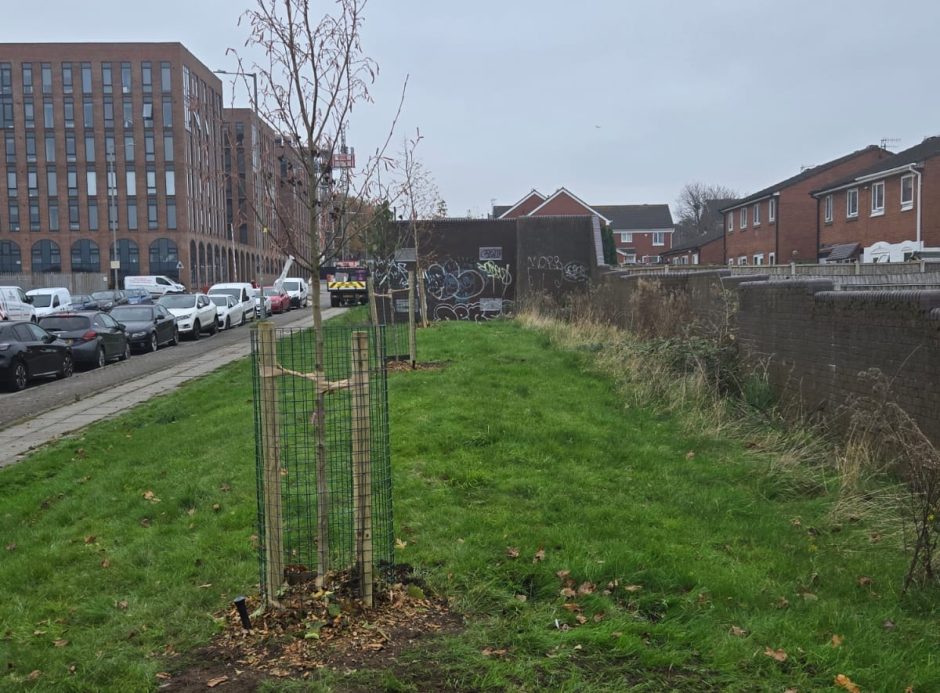Liverpool, United Kingdom: Prioritising nature-based solutions to transform urban areas
In The News
15 Jan 2025
Well-known for its musical heritage, the English city of Liverpool faces a range of challenges related to climate change, particularly increased flooding and the need to increase its urban greenery. With transport accounting for 33 per cent of the city’s carbon emissions (half a million tonnes) it is vital the city invests in and promotes its ‘active travel’ infrastructure.
In response to these challenges, Liverpool City Council (LCC) declared a Climate Emergency in 2019 and has leveraged expertise from previous EU-funded initiatives to create the ‘Greening Liverpool Project’. This initiative aims to deliver innovative, nature-based solutions to enhance public areas and encourage more residents to walk and cycle.
This is one of five projects selected for the Sustainable Cities Mobility Challenge, a programme coordinated by EIT Climate-KIC and funded for the second year through the Charities Aid Foundation (CAF) America via a grant from FedEx. It aligns seamlessly with the Council’s 10-year Transport Plan, adopted in July 2024, with the goal to increase cycle journeys tenfold by 2027.
“In the Liverpool City Region, cars are the dominant mode of transport. While two-thirds of all journeys made are less than 5 kilometres, around 50 per cent of these are taken by car. However, we learned through public engagement that many people are put off by cycling because it’s not perceived to be safe, especially in the way cyclists must ride close to cars, trucks and buses on the roads,” says Stephen Leonard, who is part of the active travel team at LCC.
Progress is already underway – on Grafton Street in the Toxteth area of the city, traffic signals have been upgraded to become more cycle- and pedestrian-friendly, and a protected bike lane will also be introduced. At nearby Upper Pitt Street, a junction currently inaccessible to vehicles and cyclists will be ‘unblocked’ by removing restrictions and introducing a cycle-only lane. A new form of innovative paving will also be introduced for the cycleway, to improve surface water drainage in an area at risk of flooding.
Increasing vegetation in public areas is also a project priority. A Grafton Street ‘Green Wall’ made of trellis planters will be installed to reduce air pollution and improve biodiversity by extending pollinator areas for insects. In another area of Liverpool – Dingle’s Hill Street – a public area will be transformed with native pollinator planting, inspired by a previous coastal wildflower planting scheme.

The project is underway at Dingle Hill Street.
Inclusive design is also at the heart of the project, adds Stephen: “We want to ensure these changes help everyone, including residents with limited mobility such as partially sighted people or residents who use a wheelchair. We’ve introduced measures such as dropped kerbs and tactile paving at crossings to make it easier and safer to get around.”
In the future, the Council aims to adopt its greening approach across Liverpool for under-used, small open spaces to include biodiversity interventions as part of future active travel schemes. Creating a well-linked network of protected segregated cycle lanes and walking routes is a key part of Liverpool’s transport plan, with the hope that cycling will become safer and residents will feel more motivated to undertake journeys by bike or on foot.
“We have a pipeline of future schemes – for example, we’ve been talking to a UK-based walking charity to collaborate with them on similar projects. This funding has allowed us to undertake small-scale green infrastructure interventions, and we hope to scale up and roll those out to wider schemes in future,” says Stephen Leonard.
EIT Climate-KIC is committed to helping transform over 400 cities into thriving, climate-resilient communities. Our collaboration with FedEx shows what is possible when corporations, city officials and citizens come together to unite for a common purpose. The success of the Challenge demonstrates the transformative power of public-private partnerships in reimagining urban mobility.
To learn more about the other participating cities, click the button below.
Read On


